

Last updated on

Google Shopping offers a wealth of opportunities for ecommerce retailers, but it also carries the risk of financial loss if not handled correctly.
Even experienced PPC professionals can fall into common traps that can deplete budgets and undermine campaign success.
However, mistakes are a natural part of the learning process and can provide crucial insights for refining your Google Shopping strategies.
In this article, we’ll explore seven frequent errors made by ecommerce retailers on Google Shopping and discuss how you can transform these challenges into opportunities for growth.
The success of any Google Shopping campaign hinges on the quality of your product feed. Superior data quality translates to better campaign results.
Unfortunately, many retailers underestimate the importance of a well-crafted feed, which can lead to problems such as:
A subpar product feed often results in low ad relevance and underwhelming campaign performance.
So, how do you ensure your product feed is in top shape?
Start by focusing on the title attribute. When optimizing product titles, keep these tips in mind:
Regularly auditing your Google Shopping product feed is crucial to ensure all information is accurate, complete, and optimized for your best-performing keywords.
Google Merchant Center offers diagnostic tools to help identify and correct errors, while feed management tools can automate and refine the optimization process.
Although Google Shopping campaigns don’t involve keyword bidding, they do require a strong negative keyword strategy.
Many retailers overlook the importance of incorporating negative keywords, which can result in wasted ad spend on irrelevant searches and decrease overall campaign efficiency and return on investment (ROI).
To minimize wasted spend, regularly review your search terms report to identify and add negative keywords.
In Google Shopping, go to Insights and reports > Search terms to see which terms triggered your ads and their performance.
If you spot irrelevant search terms, add them as negative keywords. For more efficient management, create a negative keyword list that you can update as needed.
By refining your targeting with negative keywords, you ensure your ads appear for more relevant searches, reducing wasted spend and improving campaign performance.
Bid management is a crucial element of a successful Google Shopping ads strategy.
Many PPC managers make the mistake of setting their bids once and then ignoring them, rather than adjusting them based on performance data. This hands-off approach can result in underbidding or overbidding, both of which can negatively impact your campaign’s ROI.
Another common pitfall is applying a “one size fits all” bid strategy, where the same bid amount or strategy is used across all products and campaigns.
To improve your Google Shopping bid strategy, consider leveraging automated bid strategies such as:
These Smart Bidding strategies optimize bids in real time by considering factors such as device, location, time of day, audience segments, and more.
Additionally, ensure that your daily budget is aligned with your Smart Bidding strategy to avoid over- or under-bidding in any campaign. For instance, if you have a daily budget of $50 and are using a Target CPA bid strategy with a goal of $25, you may need to significantly increase your daily budget to allow the algorithm to gather sufficient data by delivering more ad impressions.
In Google Shopping ads, the product image is often the first thing that grabs a user’s attention.
Many ecommerce retailers rely on standard images provided by manufacturers, but this approach can be problematic. When everyone uses the same image, it becomes challenging to differentiate your ads from competitors.
Consider the last time you searched for “Nike shoes” and saw numerous ads showcasing the same product from various retailers. If you’re accustomed to using stock images, it might be time to explore some new tools and strategies.
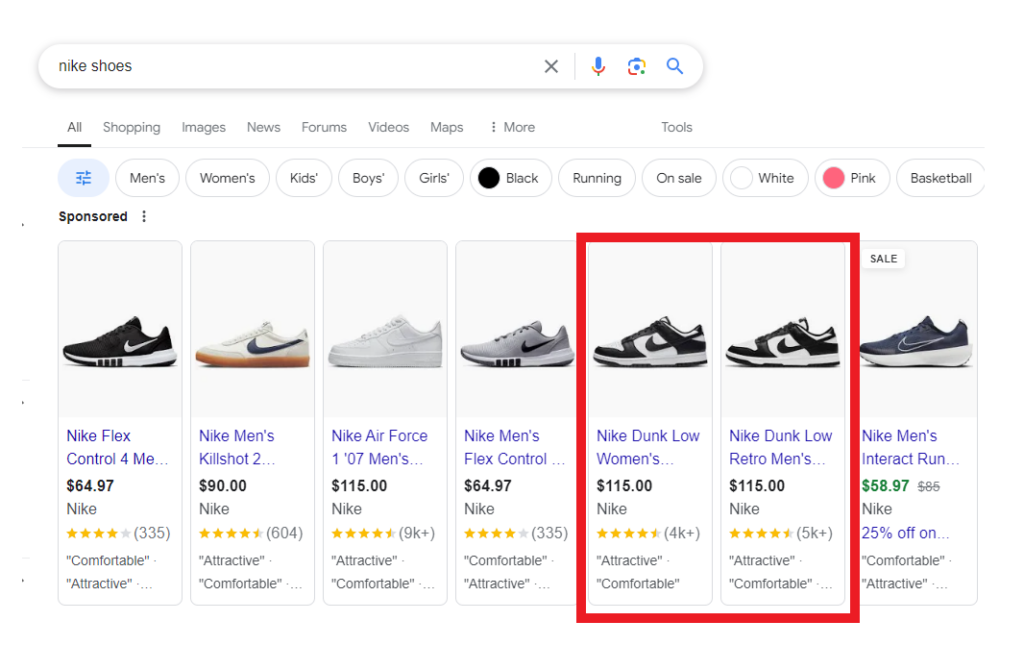
Google recently introduced several innovative tools at Google Marketing Live that can help. For instance, Product Studio, available later this year, can transform static images into dynamic videos.
Additionally, take advantage of Google’s new generative AI tools for image editing within your Google Merchant Center feed.
Lastly, experiment with A/B testing by comparing standard stock photos to lifestyle images of the product. This will help you determine which type of image resonates better with your audience.
The structure of your Google Shopping campaign can significantly impact its performance.
When setting up a Google Shopping campaign, you essentially have three options:
Each campaign type offers distinct features, functionality, and levels of control, so it’s important to choose the one that aligns with your goals.
In a Performance Max campaign, you can include a feed alongside various assets such as headlines, descriptions, and images. This allows your ads to appear across a range of Google inventory, not just within the Google Shopping network.
Conversely, feed-only Performance Max campaigns and Standard Shopping campaigns are focused exclusively on displaying ads within the Google Shopping network.
Now, let’s discuss campaign structure.
It might be tempting to create a single “All Products” ad group, but this approach can lead to inefficiencies and wasted ad spend if not managed carefully.
If you’ve invested time in organizing a clean and well-structured product feed, ensure that this effort pays off by structuring your campaigns effectively. A well-organized feed enables better control over when and where specific products are shown.
To start, consider grouping your products by category. This method provides more control over your ad listings. Also, be sure to exclude low-margin or unwanted products from your campaigns to avoid unnecessary expenditure.
Google Shopping is a fiercely competitive channel, particularly when it comes to pricing and its impact on ad performance.
Retailers who overlook their competitors’ pricing strategies may find their ads less enticing to potential customers, resulting in reduced click-through rates and conversions.
For retailers dealing with minimum quantity items, it’s crucial not only to consider lowering prices but also to evaluate how your feed displays “price per quantity.”
For instance, when searching for ‘wedding invitations,’ Shopping results reveal a range of brands with varying price points:
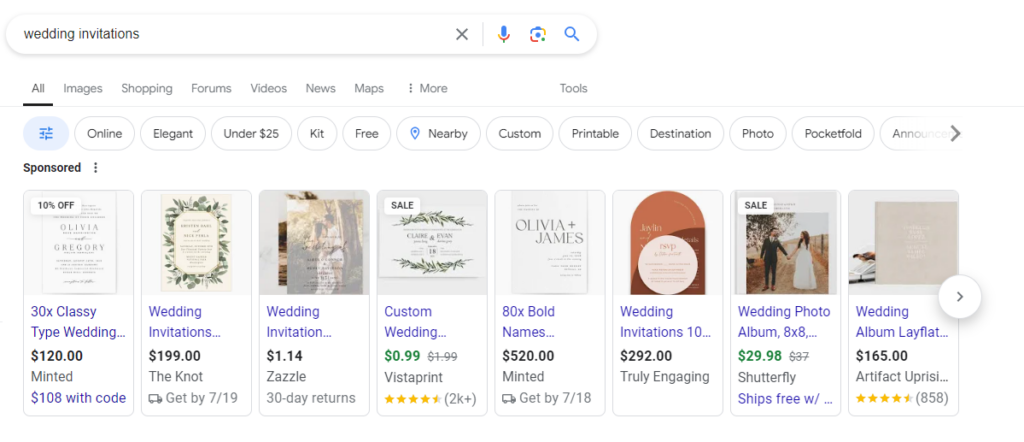
Some brands list prices based on a minimum quantity of 30 invitations, while others display the price per individual invitation.
Regularly analyzing your Shopping listings in comparison to competitors can help you determine if adjustments to your price feed structure are needed. Staying competitive and appealing to active shoppers may require fine-tuning your pricing strategy.
In today’s economy, it’s no secret that shoppers are always on the lookout for deals.
If you regularly run promotions on your website, be sure to leverage Merchant Promotions and promotion assets in Google Ads.
Implementing Merchant Promotions can enhance the appeal of your product listings, potentially boosting click-through rates and improving ROI.
For instance, when searching for ‘king bed comforter set,’ two of the Shopping ads featured Merchant Promotions.
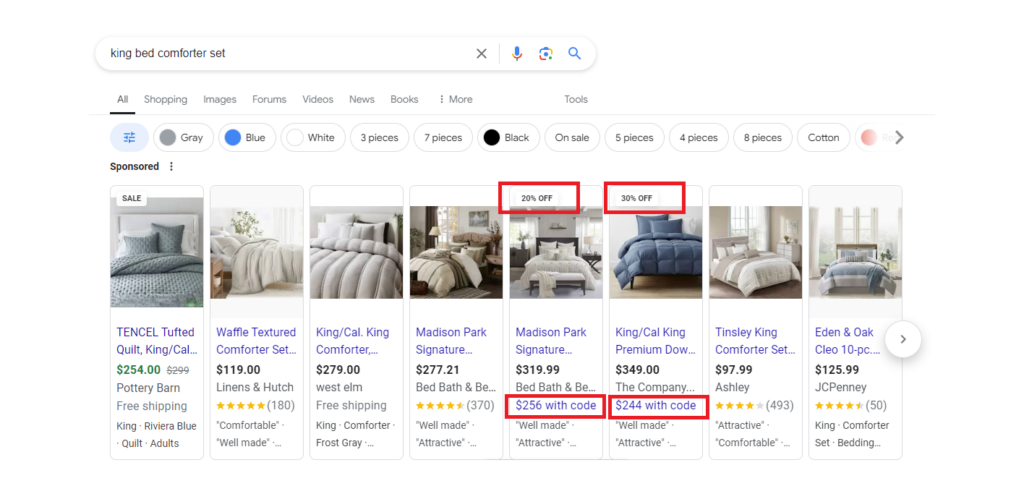
To set up a promotion, go to the Promotions tab on the left side of your Google Merchant Center account, then click Create promotion.
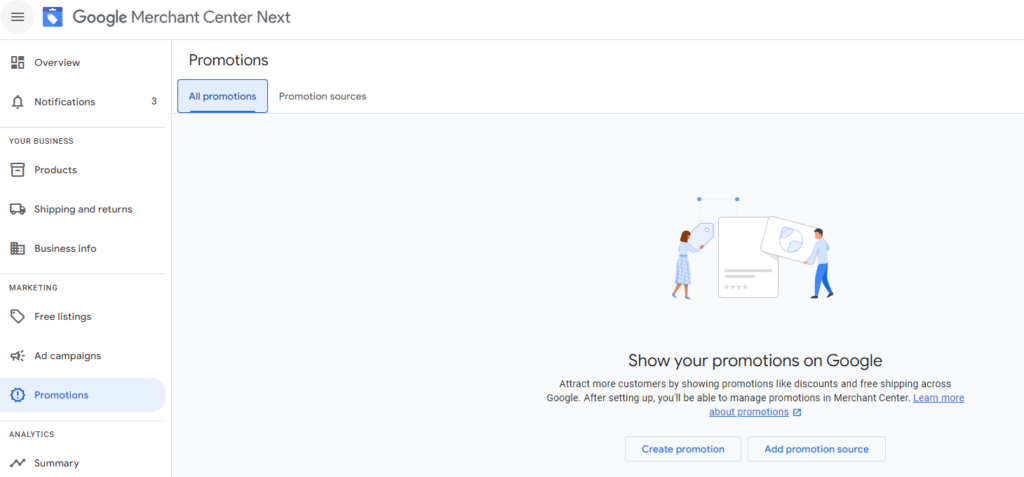
After entering the required details and saving the promotion, it may take up to 15 minutes for it to appear to shoppers.
You’ll need to provide the following information:
Including a promo code is optional; you can add it if necessary for customers to use in order to redeem the promotion.
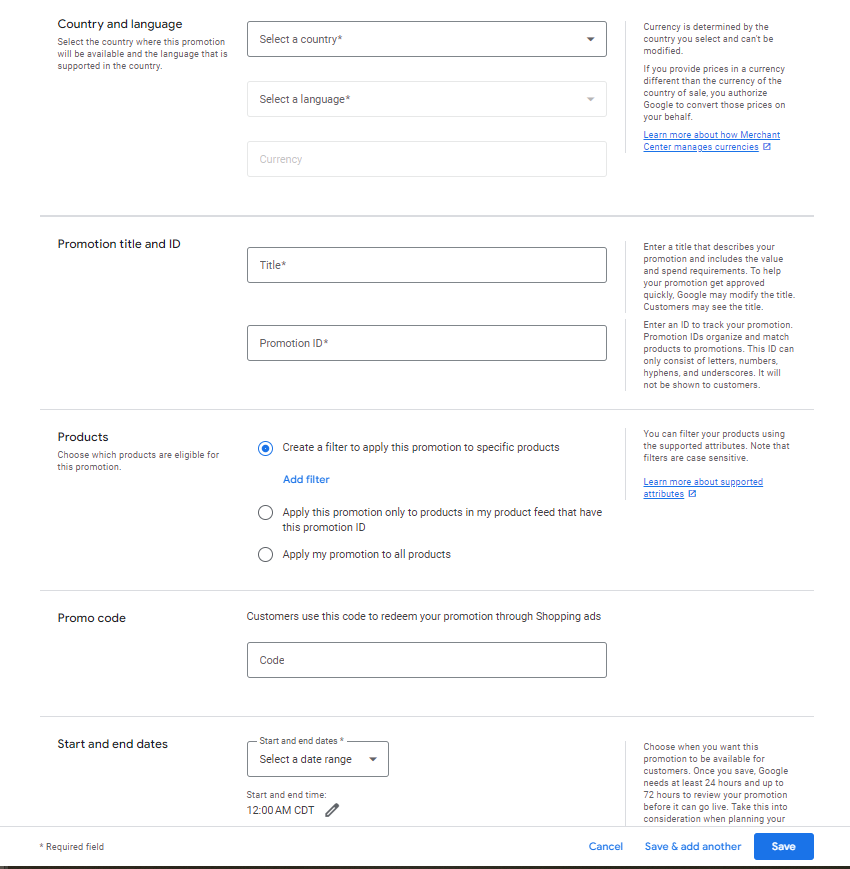
Later this year, Google will introduce new ways to customize promotions in Shopping, such as member-only deals or special pricing.
Additionally, Google will soon allow advertisers to offer ‘first order’ promotions for new customers, available in both Performance Max and Standard Shopping campaigns.
Avoiding these common Google Shopping errors can save you time, money, and frustration, while also improving your campaign performance.
By concentrating on aspects such as product feed quality, bid management, and negative keywords, you’ll be better positioned to achieve superior results and a higher ROI.
Remember, each mistake is a chance to learn and refine your strategy.
Stay proactive and continually optimize your approach, and you’ll transform your Google Shopping campaigns into a streamlined, revenue-boosting asset for your ecommerce business.
Original news from SearchEngineJournal